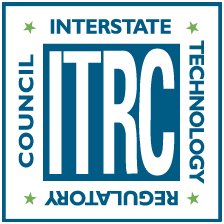Planning ICs
When remediation does not result in the immediate, unrestricted use of a property, an IC can be used to prevent unintended human or environmental exposure to the remaining contaminants. When properties undergo a risk-based corrective action, conditions that are present at the time of assessment are addressed and thus pose no risk. As a result, an IC is not necessary, though contamination may remain and use may be somewhat restricted. An IC might be considered when a new condition is introduced in the vicinity that did not previously exist. Alternatives to an IC may be more acceptable to a property owner. Using an IC is not required and is not the only alternative when remedial progress is slow. This section focuses on the decision-making aspects of IC selection and implementation that can positively or negatively affect the long-term durability of that IC. Detailed information on IC selection is not included here, except as it relates to the successful long-term management of the IC.
The IC Life Cycle
Key activities in the IC life cycle are summarized in Figure 3 (ASTM 2014). Descriptions can be seen by clicking on each section in the figure.

Figure 3. IC life cycle.
- Planning – activities leading up to implementation of an IC, such as identification of IC objectives and evaluation of possible ICs that can achieve these objectives; identification of parties’ roles and responsibilities for long-term IC activities; costs and funding sources; and other criteria or issues that may affect an IC’s long-term effectiveness.
- Implementation – activities to put the IC in place, including drafting, negotiation, execution, and recording. The clear identification of, and commitments to roles, responsibilities and resource needs for IC implementation is a critical step in developing an effective and durable IC.
- Monitoring and Performance Evaluation – actions and procedures to monitor and evaluate activities and land uses to help assure that IC integrity, compliance with IC requirements, and site risk mitigation.
- Enforcement – actions taken in response to a breach or other violation of IC terms. Actions can range from informal communications seeking voluntary compliance to more formal, legal action.
- Modification/Termination – legal or administrative steps taken to alter or remove an IC due to a change in site characteristics, or because cleanup objectives or other IC conditions have been met. Modification may also be necessary when monitoring indicates that the IC is not achieving its objectives, or as a result of an enforcement action. For long-term stewardship to be effective, an IC can include mechanisms that enable modification or termination. This process should involve a thorough evaluation that allows for maximum beneficial use of the property without increasing public health or environmental risk.
Planning for the IC Life Cycle
Planning that protects human health and the environment, using all aspects of an IC life cycle, is essential for long-term success. Effective planning can also prevent problems after the IC is implemented. Some agencies and responsible third parties, however, do not have the necessary funding or resources to plan and implement robust registry (tracking), monitoring, maintenance, performance evaluation, and enforcement programs—thus risking IC failures. Further, while many states perform some type of IC monitoring, 21% of the states surveyed have no IC monitoring program and noted the need for improvements in this area (see Appendix B, Question 16). States must consider the resources that they have available to register, track, monitor, and enforce ICs in order to achieve long-term success.
▼Read more
Developing a Long-Term Stewardship Plan
A long-term stewardship (LTS) plan, also referred to a an Institutional Control Implementation and Assurance Plan (ICIAP) (USEPA 2012), can guide a complete consideration of resources available for an IC. LTS plans supplement decision documents and function much like an operation and maintenance plan. LTS plans identify how and by whom the IC will be implemented, monitored, evaluated, enforced, and modified or terminated over the long term. These plans are typically completed concurrent with the engineering design of the active remediation components.
▼Read more


